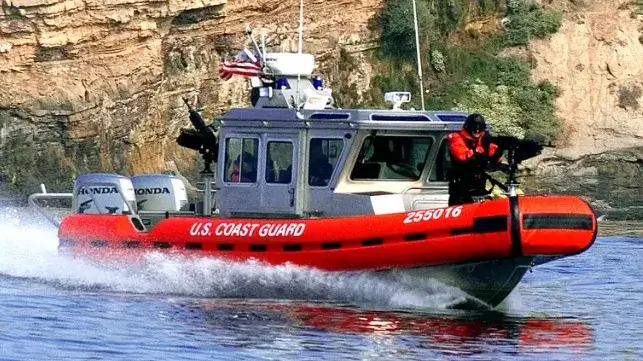U.S. Coast Guard Wants "Maritime Domain Dominance"

The U.S. Coast Guard Futures Development and Integration (FD&I) Directorate has expanded upon the familiar concept of maritime domain awareness (MDA): its future objective is now maritime domain dominance (MDD), an operating concept that seeks to give every Coast Guard asset a unified MDA information picture and shorten the timeline from threat detection to action.
The FD&I Directorate has set up a Rapid Response Rapid Prototype (RAPTOR) team to support quick deployment of new tech solutions. Among other actions, RAPTOR has issued an RFI to industry seeking technologies that support the new MDD concept. In broad terms, RAPTOR is thinking about buying systems that connect every single air and surface asset with all air, space, shore and surface sensors in real-time, handing every Coast Guard unit a "single pane of glass" MDA intelligence picture. This universal MDA information network would "facilitate the decisions and actions to follow," and boost the speed and quality of threat identification in U.S. waters and maritime approaches, enabling dominance.
The first identified problem in the RFI is an MDA shortcoming. The service has to monitor 95,000 miles of coastline, plus maritime approaches. Sensor coverage for this mission set is currently insufficient, and the service believes it has to "rapidly field and deliver threshold capability to facilitate closing maritime surveillance gaps," thereby generating improved MDA.
Beyond sensing, the RAPTOR office also wants technology that supports "sense, decide, and act" operations. This requires more than just winning the threat detection battle of maritime domain awareness: it requires information sharing with frontline units so that they can do something useful. In short, the technology should support "transmission of targeting and actioning requests to the tactical edge."
"Maritime Domain Dominance ensures that awareness is converted into an operational advantage, enabling freedom of navigation, rapid response to emerging threats, and sustained control of our maritime domain," the office wrote.
Defense primes wishing to market fully integrated systems are discouraged. "The Coast Guard is not looking for a singular solution to provide the MDD capability, but rather a holistic and/or collection of capabilities to achieve this desired outcome," the service said.
Beyond programmatic goals, the office's new "dominance" terminology aligns with the assertive branding trends in the executive branch, as seen recently in the creation of the "National Energy Dominance Council." Realignment of branding is not new for the Coast Guard, as seen before with the strategic renaming of the long-deferred "heavy icebreaker" program as the "Polar Security Cutter" in 2018. The new name was a better fit with congressional funding priorities, and the underlying product remained the same - a lightly-armed, Antarctic-capable icebreaker.
"When we talk about icebreaking capability, that doesn’t sell very well to all audiences," then-chief of engineering Rear Adm. Melvin Bouboulis told USNI in 2018, speaking about the PSC program. "We understand that some folks think just it goes and breaks ice, but we’ve purposely changed the name of that program to Polar Security Cutter because it is really the U.S. presence in the Arctic regions and preserving our national interest and security in those areas."
